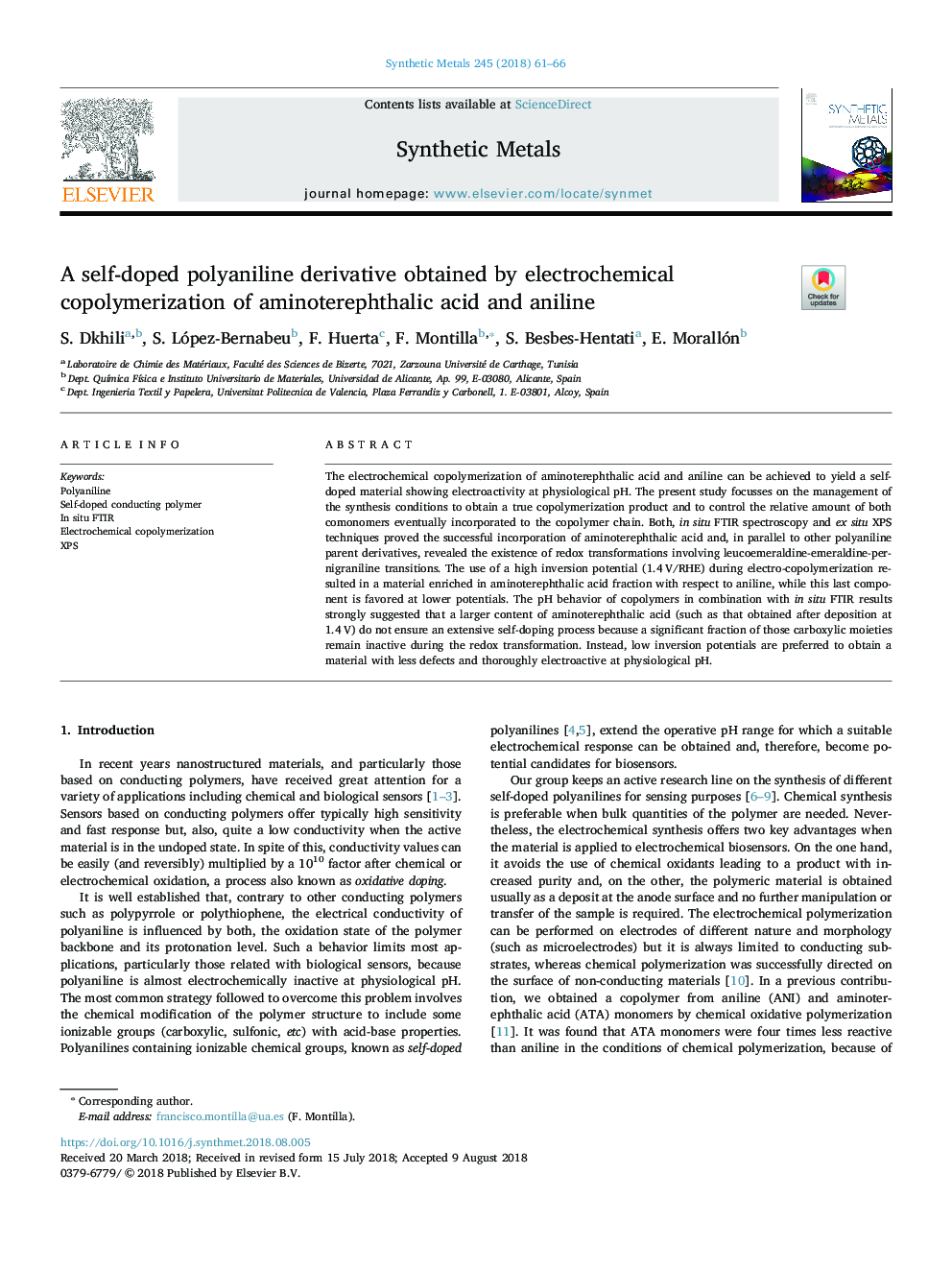| Article ID | Journal | Published Year | Pages | File Type |
|---|---|---|---|---|
| 9953489 | Synthetic Metals | 2018 | 6 Pages |
Abstract
The electrochemical copolymerization of aminoterephthalic acid and aniline can be achieved to yield a self-doped material showing electroactivity at physiological pH. The present study focusses on the management of the synthesis conditions to obtain a true copolymerization product and to control the relative amount of both comonomers eventually incorporated to the copolymer chain. Both, in situ FTIR spectroscopy and ex situ XPS techniques proved the successful incorporation of aminoterephthalic acid and, in parallel to other polyaniline parent derivatives, revealed the existence of redox transformations involving leucoemeraldine-emeraldine-pernigraniline transitions. The use of a high inversion potential (1.4âV/RHE) during electro-copolymerization resulted in a material enriched in aminoterephthalic acid fraction with respect to aniline, while this last component is favored at lower potentials. The pH behavior of copolymers in combination with in situ FTIR results strongly suggested that a larger content of aminoterephthalic acid (such as that obtained after deposition at 1.4âV) do not ensure an extensive self-doping process because a significant fraction of those carboxylic moieties remain inactive during the redox transformation. Instead, low inversion potentials are preferred to obtain a material with less defects and thoroughly electroactive at physiological pH.
Related Topics
Physical Sciences and Engineering
Materials Science
Biomaterials
Authors
S. Dkhili, S. López-Bernabeu, F. Huerta, F. Montilla, S. Besbes-Hentati, E. Morallón,
